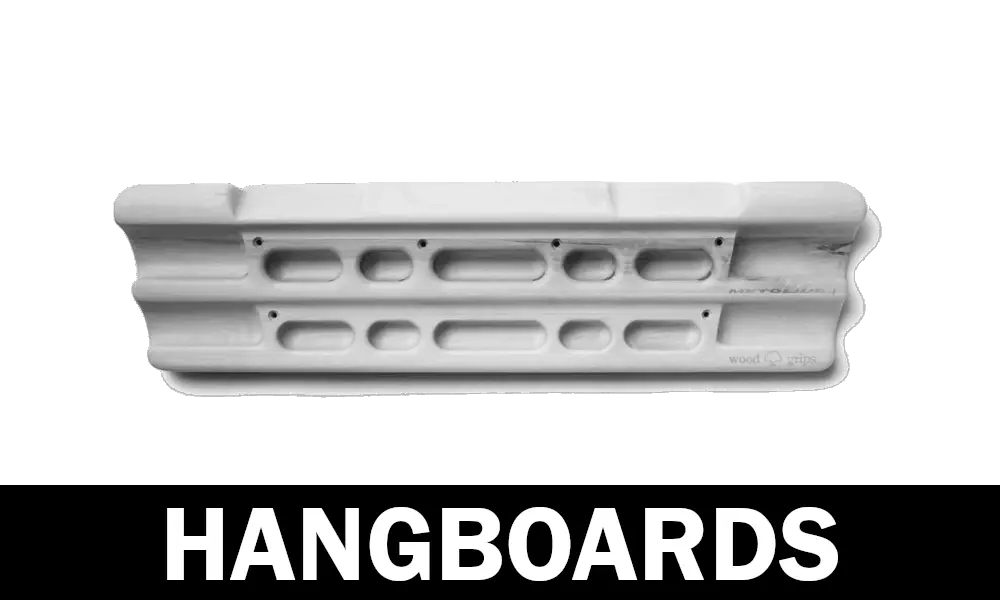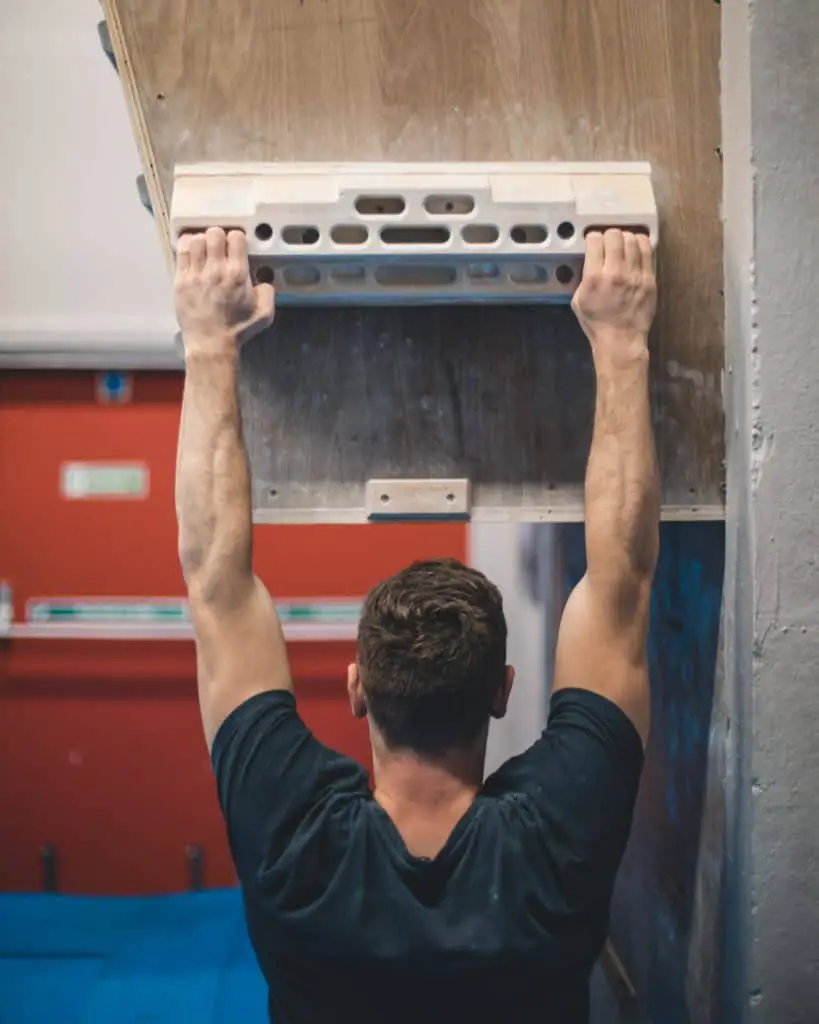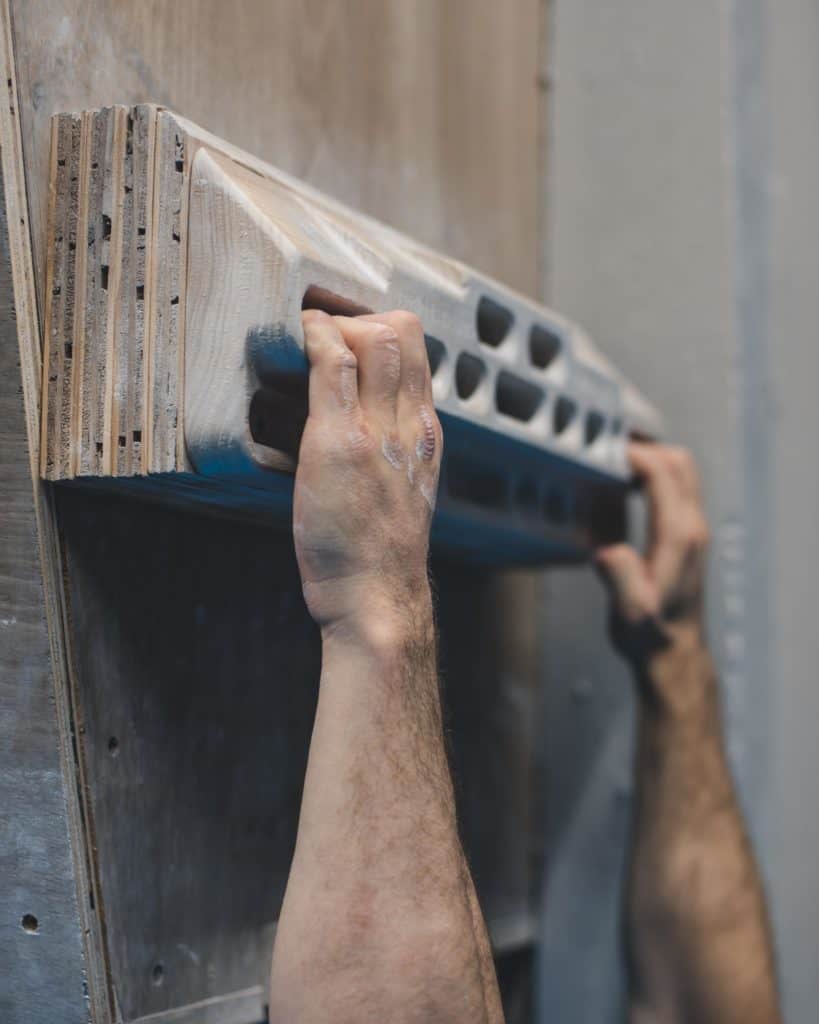
Climbing hangboards are great for increasing forearm and finger strength and they’re pretty much an essential part of a devoted climbers routine. However, there are many factors to think about when purchasing a hangboard. You may even find that you’ve come to a point in your climbing where you can’t seem to improve, or you’re improving at a very slow rate. The reason may be because your finger strength isn’t as good as it should be for those higher grades.
Finger strength is one of those things that helps massively in climbing, so training on a hangboard everyday will add to your climbing experience. They are honestly a game changer and if your local climbing gym has one, use it after a climbing session. Higher graded climbs include different hand holds that usually require more strength in the fingers, so if you ever want to get to climb V7+ regularly then you’re going to have to train on hangboards.
What to look for in a good hangboard:
- Durability – We want our hangboard to be durable.
- Finger comfort – If we’re using this bad boy a lot, we need comfortable fingers.
- Pocket types – A variety of pockets is ideal.
- Skin friendly – Let’s look after our skin.
- Width – Wider hangboards are better for the shoulders.
- Price – The cheaper the better obviously, but we still want a quality product.
- Materials used – Wood is preferable over resin, but it’s usually more expensive.
The best hangboards are usually made of wood. You can attach them much easier to walls and portable pull-up bars (such as this one here), therefore making a portable hangboard. They’re also very sturdy. Personally, I love wooden hangboards. They’re stronger, more environmentally friendly and I’ve also found they’re better on my skin.
My Best Hangboard Pick
Whenever I’ve used Metolius hangboards they always seem to be the most comfortable, but they still give you the utility for a normal hangboard session. A home training hangboard doesn’t have to be anything fancy, it just has to hit the main points we’ve gone through. As I’ve already mentioned, I’m a big fan of wooden hangboards over polyester resin. One hangboard I have used on multiple occassions is the Metolius Wood Grips II Climbing Board. It’s comfortable, durable, relatively cheap and comes with the mounting hardware and instructions for fitting.
Metolius Wood Grips II Climbing Board
Fancy a cheaper option with a similar result? Take a look at the Metolius Prime Rib Training Board. The Prime Rib hangboard gives you 3 different sized rungs to hang from, meaning whether you’re finger strength is non-existent or quite advanced you’ll still get some really good use from it.
Metolius Prime Rib Training Board
For a full page of hangboards and climbing holds click here.

How to Hang on a Hangboard
Many people make the same mistake when using a hangboard: they hang with their ears and their shoulders at the same level. You need to engage your shoulders. Bring your ears up above your shoulders. It’ll probably feel uncomfortable at first but you have to remember that with most of the movements in climbing you will be engaging your shoulders. When hangboarding your arms should never be straight. You should bend them a little bit just to take the weight off.
Hangboard Exercise

The following exercises have sub-headings for different levels of finger strength. If you’ve never been on a hangboard or don’t train on one that much then you should probably do the first exercise mentioned.
I suggest you try out a 30 day cycle. Time how long you can hang on to each finger hold with both hands before your 30 day regime, then do the same at the end of the 30 days. This will show you just how much your finger strength/endurance has improved.
The exercise:
- Have a phone timer or stopwatch nearby.
- Place both hands into the deepest rung – four fingers in, thumbs out.
- Hang for 10 seconds.
- Rest for 10 seconds.
- Repeat this another 4 times (5 times total)
- Rest for 3-4 minutes making sure your body has fully recovered.
- Repeat this whole cycle 6-7 times in total.
- Do this either everyday or every two days for required results.
- You should be able to hang for at least 7 seconds, at most 11 seconds before you feel fatigue in your fingers.
- Once you get good enough, do this on the more shallow rung.
- If your fingers are need even more strength, add 5lb or 10lb weights to your body.
After around 10-15 days of doing this exercise DAILY you should probably be feeling a difference with your climbing. Some of the holds you might usually avoid may be easier to grab.
Does Hangboarding Cause Injuries?
It’s rare that hangboarding causes an injury. However, if you already have an underlying finger or forearm injury and start to train on a hangboard then you may find that you irritate that injury. I would also advise beginners to find a more advanced climber, or even an actual coach to teach them how to hangboard because most hangboarding injuries occur with beginners. I would advise you not to attempt hangboarding if you’ve been climbing less than 6 months, haven’t got adequate finger strength already, and don’t know what you’re doing.
Avoid training on a hangboard at the end of a climbing session as you’re more likely to stretch the tendons in your fingers, and don’t wrap your thumbs around your fingers.
To make sure you avoid injuries you can warm up before you start hangboarding. Nothing is worse than stiff joints in the hands before you use a hangboard. Stretch your fingers and shake your hands out to get the blood flowing in them. Warm your shoulders up by slowly rotating them backwards and forwards.
Not Motivated to Use a Hangboard?
Some people just aren’t motivated enough to use a hangboard, and it’s understandable. It’s a lot of work and takes a lot of time. My advice to you is to set climbing goals. Do you want to be climbing a much higher grade in 6 months time? Then start hangboarding. Do you have dreams of deep water soloing which requires a lot of finger strength? Then train on a hangboard. Set your goals, understand a hangboard is crucial to hit them, and then you can keep that motivation going.
What to do When You’re Feeling Tired
Sometimes using a hangboard is the last thing you want to do on a certain day, but you have to remember it’s more to do with your heart rate than anything else. It’s at a resting state, plus you may not feel very motivated. The best thing I can advise is that you increase your heart rate. Go work out a little first, maybe jog on the spot, or do some a few sets of pull ups.


